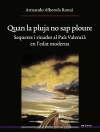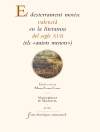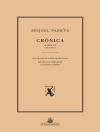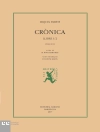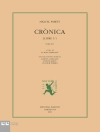The Viennese café was a key site of urban modernity around 1900. In the rapidly growing city it functioned simultaneously as home and workplace, affording opportunities for both leisure and intellectual exchange. This volume explores the nature and function of the coffeehouse in the social, cultural, and political world of fin-de-siècle Vienna. Just as the café served as a creative meeting place within the city, so this volume initiates conversations between different disciplines focusing on Vienna at the beginning of the twentieth century. Contributions are drawn from the fields of social and cultural history, literary studies, Jewish studies and art, and architectural and design history. A fresh perspective is also provided by a selection of comparative articles exploring coffeehouse culture elsewhere in Eastern Europe.
Содержание
List of Illustrations
Preface
Notes on Contributors
Introduction
Charlotte Ashby
Chapter 1. The Cafés of Vienna: Space and Sociability
Charlotte Ashby
Chapter 2. Time and Space in the Café Griensteidl and the Café Central
Gilbert Carr
Chapter 3.The Jew Belongs in the Coffeehouse’: Jews, Central Europe and Modernity
Steven Beller
Chapter 4. Coffeehouse Orientalism
Tag Gronberg
Chapter 5. Between ‘The House of Study’ and the Kaffeehaus: The Central European Café as a Site for Hebrew and Yiddish Modernism
Shachar Pinsker
Chapter 6. Michalik’s café in Kraków: Café and Caricature as Media of Modernity
Katarzyna Murawska-Muthesius
Chapter 7. The Coffeehouse in Zagreb at the turn of the Nineteenth and Twentieth Centuries: Similarities and Differences with the Viennese Coffeehouse
Ines Sabotic
Chapter 8. Adolf Loos’s Kärntner Bar: Reception, Reinvention, Reproduction
Mary Costello
Chapter 9. Graphic and Interior Design in the Viennese coffeehouse around 1900: Experience and Identity
Jeremy Aynsley
Chapter 10. The Cliché of the Viennese Café as an Extended Living-room: Formal Parallels and Differences
Richard Kurdiovsky
Chapter 11. Coffeehouses and Tea Parties: Conversational Spaces as a Stimulus to Creativity in Sigmund Freud’s Vienna and Virginia Woolf’s London
Edward Timms
Bibliography
Index
Об авторе
Simon Shaw-Miller is Professor of the History of Art at the University of Bristol. He is an Honorary Associate of the Royal Academy of Music, London. His publications include: Visible Deeds of Music: Music and Art from Wagner to Cage (Yale University Press 2002), Samuel Palmer Revisited (co-edited, Ashgate 2010) and Eye h Ear: The Visual in Music (Ashgate 2013). He won the Prix Ars Electronica Media.Art.Research Award in 2009.


